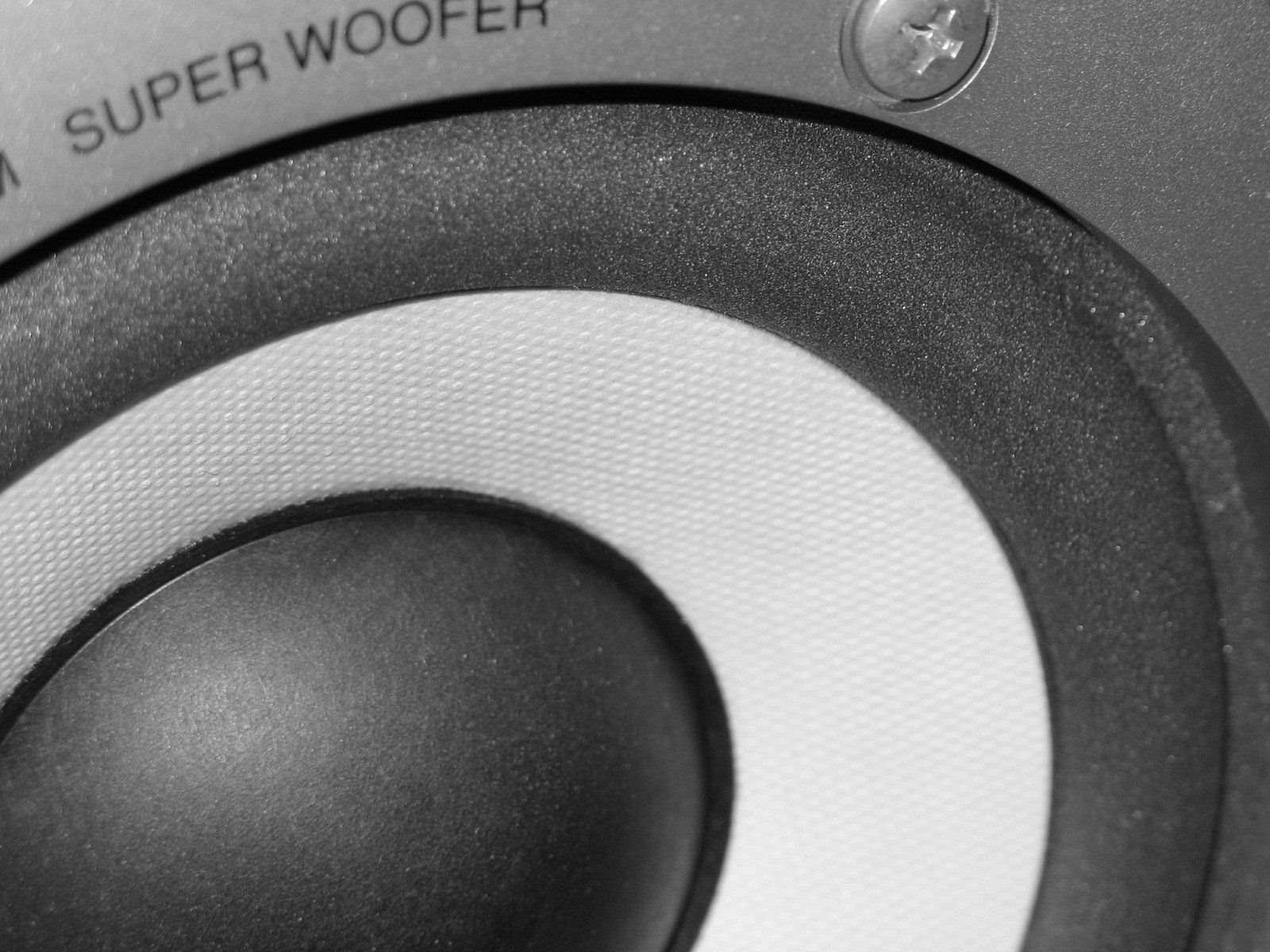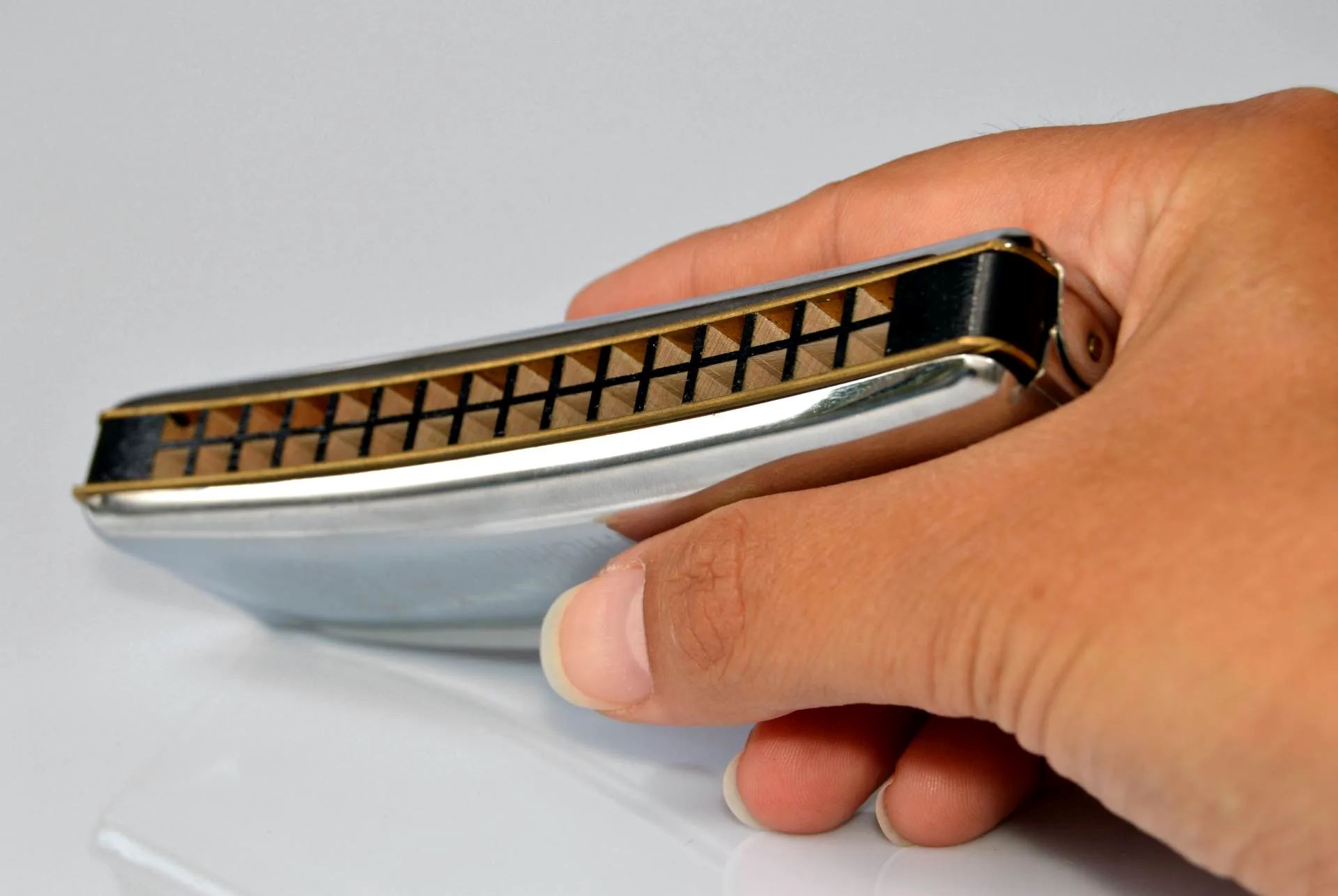Home>Devices & Equipment>Subwoofer>How Do You Fix A Blown Subwoofer?


Subwoofer
How Do You Fix A Blown Subwoofer?
Published: January 22, 2024
Learn how to fix a blown subwoofer and bring back the deep bass you love. Affordable solutions and expert tips to revive your subwoofer.
(Many of the links in this article redirect to a specific reviewed product. Your purchase of these products through affiliate links helps to generate commission for AudioLover.com, at no extra cost. Learn more)
Table of Contents
Introduction
Welcome to the world of subwoofers, where deep bass and thunderous sound reign supreme. Whether you’re a music enthusiast or a movie lover, a well-functioning subwoofer is essential for an immersive audio experience. However, what happens when your subwoofer stops booming and becomes a mere whisper? Chances are, it may be blown.
A blown subwoofer can be a frustrating situation, but fear not – in this article, we will explore what a blown subwoofer is, how to identify the symptoms, and how to fix it. Whether you’re a seasoned audiophile or a novice sound enthusiast, you’ll gain valuable insights into subwoofer repair and maintenance.
Before we dive into the details, it’s important to understand what exactly a blown subwoofer means. Put simply, a blown subwoofer refers to a speaker that has been damaged and is no longer functioning correctly. This damage can occur for several reasons, including excessive power, improper usage, or even manufacturing defects.
So, if you’re ready to embark on a journey to revive your subwoofer and bring the bass back into your life, let’s delve deeper into the fascinating world of subwoofer repair!
Understanding a Blown Subwoofer
Before we can effectively fix a blown subwoofer, it’s crucial to understand what exactly is happening inside the speaker that causes it to malfunction. A subwoofer consists of several key components, including the cone, voice coil, surround, and magnet. Each of these parts plays a vital role in producing the deep bass tones that we love.
When a subwoofer is blown, it means that one or more of these components has been damaged to the point where it can no longer function properly. This damage can occur in a variety of ways, such as overloading the speaker with too much power, playing music at excessively high volumes, or even due to manufacturing defects.
One common cause of subwoofer damage is overpowering. This happens when the subwoofer receives a signal that exceeds its maximum power-handling capacity. The excessive power causes the voice coil to heat up rapidly, potentially melting the adhesives that hold it in place. This can lead to a misalignment of the coil, reducing the subwoofer’s ability to move and produce sound accurately.
Another cause of subwoofer damage is playing music at extremely high volumes. When pushing the subwoofer to its limits, the components can become strained, resulting in distortion, clipping, or even physical damage to the cone or voice coil. This can lead to a noticeable decrease in sound quality and overall performance.
In some cases, subwoofer damage can also be the result of manufacturing defects. These defects can include issues with the cone, surround, or voice coil, which may lead to premature failure or decreased longevity of the subwoofer.
Now that we have a basic understanding of what a blown subwoofer entails, let’s move on to the next section, where we will explore the common symptoms that indicate a subwoofer is blown.
The Symptoms of a Blown Subwoofer
Identifying whether your subwoofer is blown or simply experiencing minor issues can sometimes be challenging. However, there are several common symptoms that can help you determine if your subwoofer is indeed in need of repair. Here are some indicators to look out for:
- No Sound: One of the most obvious signs of a blown subwoofer is the complete absence of sound. If you’re no longer experiencing any deep bass notes or vibrations from your subwoofer, it’s possible that the speaker has been damaged.
- Distorted Sound: Another common symptom is distorted sound coming from the subwoofer. This can manifest as a buzzing, rattling, or crackling noise when playing audio. Distortion often indicates that the cone or voice coil has been compromised.
- Reduced Bass Performance: If you notice a significant decrease in the subwoofer’s ability to produce deep and powerful bass tones, it could be a sign of damage. The subwoofer may sound weak or muffled compared to how it used to perform.
- Visible Damage: Physical damage to the subwoofer is another telltale sign of a blown speaker. Look for tears or holes in the cone, sagging or detached surround, or any other visible signs of damage to the speaker components.
- Smell of Burning: In some cases, a blown subwoofer may emit a distinct smell of burning or overheating. This can be an indication that the voice coil has been damaged or that the subwoofer has been subjected to excessive power.
It’s important to note that these symptoms may also be caused by other factors, such as loose connections, damaged cables, or issues with the amplifier. Therefore, it’s advisable to troubleshoot these possible causes before concluding that your subwoofer is blown.
In the next section, we will explore how to assess the extent of the damage and determine whether your subwoofer can be fixed or if it needs to be replaced.
Assessing the Damage
Once you have identified the symptoms of a potentially blown subwoofer, the next step is to assess the extent of the damage. This will help you determine the best course of action, whether it’s attempting a DIY repair or seeking professional assistance.
Start by visually inspecting the subwoofer for any visible damage. Check the cone, surround, voice coil, and any other components for tears, holes, or signs of detachment. If you notice severe physical damage, it’s likely that the subwoofer will need to be replaced.
Next, listen carefully to the subwoofer’s sound quality. If there is no sound at all, it could indicate a complete failure of the speaker. However, if you can hear distorted or muffled sound, it suggests that certain components are still functioning to some extent.
Another valuable tool for assessing the damage is a multimeter. By testing the resistance of the voice coil, you can determine if it is intact or if there is a break. A significant increase in resistance or an open circuit reading indicates a blown voice coil.
If you have access to another subwoofer or speaker, you can also swap it with the suspected blown subwoofer to see if the issue persists. If the replacement speaker works fine, it confirms that the original subwoofer is indeed the problem.
Keep in mind that while some minor subwoofer issues can be repaired, extensive damage may render the speaker irreparable. In such cases, it’s best to consider replacing the subwoofer with a new one to ensure optimal sound quality and performance.
Now that you have assessed the damage, it’s time to explore possible DIY fixes for a blown subwoofer. Join us in the next section as we delve into repair strategies that you can try at home.
DIY Fixes for a Blown Subwoofer
If you’ve determined that your subwoofer has suffered minor damage and want to attempt a DIY fix, there are a few strategies you can try before resorting to replacement. Keep in mind that these fixes may not work for every case, and if you’re unsure or uncomfortable with the repair process, it’s best to consult a professional.
Here are some DIY fixes for a blown subwoofer:
- Voice Coil Repair: If the voice coil is the cause of the issue, you can try repairing it. This may involve removing the damaged voice coil and replacing it with a new one. However, this can be a complex and delicate process, requiring knowledge of soldering and speaker mechanics. It’s crucial to ensure that the replacement coil matches the specifications of your subwoofer.
- Cone Repair: If the cone of the subwoofer is damaged but the voice coil is intact, it may be possible to repair the cone. This can involve carefully patching tears or holes using specialized adhesives or even replacing the cone if necessary. However, cone repairs can be challenging and may alter the overall sound quality.
- Surround Repair: The surround (the flexible ring that connects the cone to the subwoofer frame) can sometimes become detached or damaged. This issue can be remedied by reattaching the surround using appropriate adhesives or replacing it if needed. Just make sure to select a surround that matches the specifications of your subwoofer.
- Amplifier Settings: In some cases, the issue may not be with the subwoofer itself but rather with the amplifier settings. Check the amplifier’s crossover frequency, gain, and other settings to ensure they are properly calibrated for your subwoofer. Adjusting these settings may improve the sound quality and performance.
Remember, attempting these DIY fixes requires caution, patience, and a good understanding of the subwoofer’s construction. If you’re unsure or uncomfortable, it’s best to seek professional help to avoid further damage.
However, if the DIY fixes don’t yield satisfactory results or if the damage is extensive, it may be time to consider replacing the blown subwoofer. In the next section, we will explore the process of replacing a subwoofer and some factors to consider when selecting a new one.
Replacing the Blown Subwoofer
If your efforts to repair the blown subwoofer have been unsuccessful or if the damage is beyond repair, it’s time to consider replacing the subwoofer. While it may be disappointing to part ways with your old subwoofer, the replacement process can provide an opportunity to upgrade and enhance your audio system.
Here are some steps to follow when replacing a blown subwoofer:
- Determine the specifications: Before purchasing a new subwoofer, it’s essential to understand the specifications required to ensure compatibility with your existing audio system. This includes factors such as power handling, impedance, and frequency range. Refer to the user manual of your amplifier to find the ideal specifications for a subwoofer.
- Consider your needs: Take some time to evaluate your audio preferences and requirements. Are you primarily using the subwoofer for music or movies? Do you prefer tighter and punchier bass or deeper and more resonant bass? Consider factors like room size, listening preferences, and budget to determine the type and size of subwoofer that best suits your needs.
- Research and compare options: Explore various subwoofer models and brands to find the best fit for your requirements. Look for reviews and recommendations from trusted sources and compare features, performance, and pricing. Consider factors like cone material, amplifier power, and enclosure type to ensure you choose a subwoofer that will deliver the sound quality you desire.
- Purchase and install: Once you have selected the ideal replacement subwoofer, make the purchase from a reputable retailer or online store. Follow the manufacturer’s guidelines for installation, ensuring proper connections and positioning. Take your time to set up the new subwoofer correctly, considering factors like placement, room acoustics, and calibration to achieve optimal performance.
- Enjoy the enhanced audio: With your new subwoofer in place, sit back, relax, and enjoy the immersive audio experience it provides. Fine-tune the settings and experiment with different genres of music or movie soundtracks to fully appreciate the improved bass response and overall sound quality.
Remember, while replacing a blown subwoofer may seem like an expense, it can greatly enhance your audio system and provide years of enjoyment. Embrace the opportunity to upgrade and explore new sonic possibilities.
In the final section, we will discuss some important tips for preventing subwoofer blowouts and ensuring the longevity of your new subwoofer.
Preventing Subwoofer Blowouts
While dealing with a blown subwoofer can be a frustrating experience, there are steps you can take to prevent it from happening in the first place. By implementing some essential tips for subwoofer maintenance and usage, you can prolong the life of your subwoofer and avoid potential blowouts.
Here are some important tips for preventing subwoofer blowouts:
- Proper Power Management: Ensure that your subwoofer is receiving the appropriate amount of power from the amplifier. Avoid overpowering the subwoofer by setting the amplifier’s gain and volume controls to suitable levels. Excessive power can cause the voice coil to overheat and result in damage to the subwoofer.
- Use a High-Quality Amplifier: Pair your subwoofer with a high-quality amplifier that is capable of delivering clean and consistent power. A well-matched amplifier will provide the necessary control and precision for optimal subwoofer performance and prevent the risk of overpowering or distortion.
- Be Mindful of Volume Levels: Avoid playing audio at excessively high volumes for prolonged periods. This can strain the components of the subwoofer, leading to damage or distortion. Take breaks and give your subwoofer time to rest between sessions to prevent overheating.
- Proper Enclosure and Placement: Ensure that your subwoofer is housed in an appropriate enclosure and positioned correctly in your listening environment. Choose an enclosure that matches the specifications of your subwoofer and place it away from walls or corners that can affect bass response. Proper enclosure design and placement can optimize the subwoofer’s performance and prevent unnecessary stress on the components.
- Regular Maintenance: Keep your subwoofer clean and free from dust and debris. Periodically inspect the cone, voice coil, and surround for any signs of wear or damage. Cleaning the subwoofer regularly can help prevent buildup that can affect its performance and potentially cause damage.
- Monitor and Adjust Settings: Keep an eye on the amplifier settings, such as crossover frequency and gain, to ensure they are properly calibrated for your audio setup. Adjust the settings as necessary to achieve the desired sound quality while avoiding strain on the subwoofer.
By following these preventive measures, you can significantly reduce the risk of subwoofer blowouts and enjoy uninterrupted low-frequency reproduction for years to come.
With this comprehensive guide to understanding, fixing, and preventing blown subwoofers, you are now equipped with the knowledge and strategies to take care of your subwoofer and maintain its optimal performance. Remember, a little maintenance and care can go a long way in ensuring the longevity and enjoyment of your subwoofer.
So, get ready to immerse yourself in the deep, earth-shaking bass that a well-functioning subwoofer can provide!
Conclusion
A blown subwoofer can be a disappointing setback for any audio enthusiast, but with the right knowledge and approach, it can be resolved. In this comprehensive guide, we explored what a blown subwoofer is, how to identify the symptoms, and various strategies for repair and prevention.
Understanding the components of a subwoofer and the potential causes of damage is crucial in assessing the extent of the problem. Whether it’s a misaligned voice coil, a torn cone, or a detached surround, thorough inspection can help determine the necessary repair steps.
For those who are inclined to take matters into their own hands, there are DIY fixes that can be attempted, such as voice coil repair, cone repair, or surround reattachment. These solutions require caution and knowledge of speaker mechanics, so it’s important to proceed with care.
In some cases, the damage may be too severe, or the DIY fixes may not yield satisfactory results. When this is the case, replacing the blown subwoofer becomes the most viable option. Consider the specifications, your audio requirements, and do thorough research to find the best replacement subwoofer for your needs.
To prevent future subwoofer blowouts, it’s crucial to manage power properly, use high-quality amplifiers, be mindful of volume levels, ensure proper enclosure and placement, perform regular maintenance, and monitor and adjust settings accordingly.
By following these guidelines, you can avoid unnecessary damage, prolong the life of your subwoofer, and enjoy a continuous and immersive audio experience.
Remember, when dealing with subwoofer repair and maintenance, it’s essential to prioritize your safety and comfort level. If unsure about any aspect of the process or uncomfortable with the repairs, it’s always wise to seek assistance from a professional.
With the information provided in this guide, you now have the tools and understanding to revive a blown subwoofer or prevent such issues in the future. So, don’t despair if your subwoofer takes a hit – approach the problem with confidence and enjoy the powerful bass that this essential audio component can bring to your listening experience!











